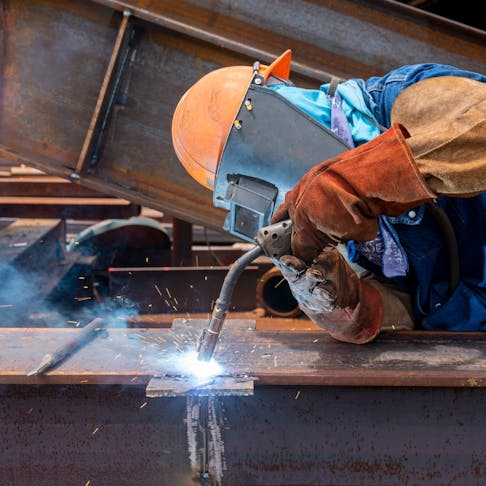Grasping Welding WPS Criteria: Best Practices and Techniques for High Quality Welds
In the realm of welding, understanding Welding Treatment Requirements (WPS) criteria is an important component that directly influences the high quality and stability of welds. Sticking to these standards makes certain uniformity and dependability in welding outcomes. Nonetheless, attaining quality in welds exceeds simply understanding the requirements; it involves applying best methods and techniques that boost the craft to a level of accuracy and ability that establishes apart the average from the exceptional. As we browse via the intricacies of welding WPS standards, uncovering key understandings and methods for achieving top-tier welds will be paramount for welders seeking to master their craft and create welds that stand the test of time.
Comprehending Welding WPS Criteria

Inspectors rely on WPS paperwork to validate that welding procedures are being complied with properly and that the resulting welds are of high top quality. Engineers use WPS standards to develop welding treatments that guarantee the longevity and reliability of welded frameworks.


Necessary Devices for Top Quality Welds
Understanding welding WPS criteria is necessary for welders to properly use the necessary tools needed for creating high quality welds. One of the most crucial devices for top quality welds is a welding maker. The kind of welding device needed relies on the welding procedure being utilized, such as MIG, TIG, or stick welding. Welding helmets are also indispensable to shield the welder's eyes and face from triggers, warm, and UV radiation. Additionally, welding handwear covers constructed from heat-resistant and resilient materials guard the hands from injuries and burns. Clamps and magnets aid hold the workpieces together safely during the welding process, making certain exact and accurate welds. Cord brushes and breaking hammers are vital for cleaning the weld joint prior to and after welding to remove any kind of pollutants that could influence the high quality of the weld. Last but not least, a determining tape and angle grinder are beneficial tools for making certain appropriate placement and preparing the workpieces for welding.
Key Methods for Welding Success
To accomplish welding success, one should grasp the key techniques essential for generating top notch welds. One essential technique is preserving the proper arc length. Keeping the electrode at the optimum distance from the workpiece is crucial for producing solid, uniform welds. Furthermore, managing the traveling speed is critical. Moving also promptly can result in inadequate infiltration, while relocating also slowly can result in extreme warm input and possible issues. Proper manipulation of the electrode angle is one more crucial method. The angle at which the electrode is held can influence the bead form and infiltration of the weld. In addition, ensuring regular weapon angle and instructions of travel is vital for harmony in the weld bead. Finally, maintaining a steady welding and a consistent hand setting throughout the procedure is crucial to attaining accuracy and uniformity in the welds. By grasping these crucial strategies, welders can raise the high quality of their job and accomplish welding success.
Ensuring Compliance With WPS Specifications
In addition, keeping thorough records of welding criteria, equipment calibration, and evaluation outcomes is important for demonstrating conformity with WPS standards. By diligently sticking to WPS requirements, welders can ensure that their job satisfies the required top quality degrees and contributes to the total success of the welding task.
Troubleshooting Common Welding Issues
When encountered with usual welding issues, determining the origin is crucial for reliable troubleshooting. One prevalent problem is the existence of porosity in welds, commonly brought on by contaminants such as oil, corrosion, or moisture. To resolve this, making sure proper cleansing of the you could try these out base metal prior to welding and using the appropriate protecting gas can dramatically decrease porosity. An additional issue regularly experienced is absence of combination, where the weld falls short to correctly bond with the base product. This can stem from inadequate warmth input or inappropriate welding strategy. Changing specifications such as voltage, cable feed rate, or travel speed can help improve fusion. Furthermore, distortion, cracking, and spatter are typical welding obstacles that can be reduced via proper joint preparation, regular warmth control, and picking the appropriate welding consumables. By completely recognizing these common welding problems and their origin, welders can efficiently repair troubles and achieve top notch welds.
Final Thought
Finally, understanding welding WPS criteria calls for a comprehensive understanding of the standards, making use of crucial tools, and applying essential strategies for successful welds. Making sure informative post compliance with WPS requirements is vital for generating high quality welds and staying clear of common welding issues. By following best methods and methods, welders can accomplish consistent and trustworthy outcomes in their welding projects.
In the realm of welding, understanding Welding Procedure Spec (WPS) criteria is a vital component that straight influences the quality and stability of welds.When diving into the world of welding techniques, an essential element to comprehend is the value and intricacies of Welding Treatment Requirements (WPS) standards. WPS requirements offer a detailed standard for welding procedures, guaranteeing uniformity, top directory quality, and safety in the welding process. The type of welding maker required depends on the welding procedure being made use of, such as MIG, TIG, or stick welding.Achieving welding success through the mastery of key strategies requires a complete understanding and adherence to Welding Procedure Spec (WPS) standards.